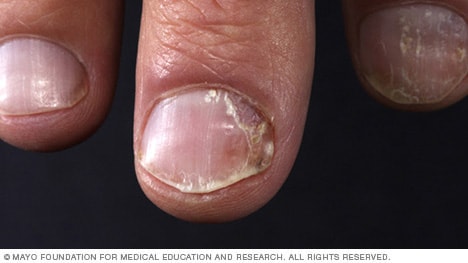तपाईंले ख्याल गर्नुभएकै होला, अहिलेका बच्चाको मुड ठिक छैन । क्षणमै रिसाउँछन् । क्षणमै खुसी हुन्छन् । अर्थात उनीहरुको मानसिकता स्थितर छैन ।
सानो कुरामा र्झकन्छन् । सानै कुरामा फुरुंग हुन्छन् । हुन त बच्चाको स्वभाविक प्रवृत्ति पनि हो । तर, अस्वभाविक रुपमा बद्लिने मुड भने सामान्य होइन, समस्या हो ।
यो बच्चाको मानसिकतासँग जोडिएको समस्या हो । अभिभावकलाई आफ्नो बच्चाको यस्तो मनोवृत्तिबारे थाहा छ । तर, के भएको हो यो ? किन यस्तो हुन्छ ? यसको उपचार के छ ? यसबारे भने थाहा छैन । त्यही कारण उनीहरु आफ्ना बच्चासँग दिक्क छन् । बच्चाको व्यवहार र प्रवृत्तिले हैरान छन् । दुःखी छन् ।
कतिपयले यस्ता बच्चालाई तह लगाउन गाली गर्छन्, डर देखाउँछन्, थर्काउँछन्, कुट्छन् । यहाँ आइपुगेपछि अभिभावकले ख्याल राख्नैपर्छ कि, बच्चालाई कुटेर, तर्साएर समस्याको हल हुँदैन । हल नहुने मात्र होइन, त्यसले गंभीर असर पुर्याउन सक्छ । त्यसैले यस किसिमको प्रवृत्ति जब बच्चामा देखापर्छ, तब अभिभावकले होशियारीपूर्वक उनीहरुलाई यसबाट छुटकारा दिलाउनुपर्छ ।
किनभने यो एक मानसिक समस्या हो, जसलाई मुड स्विंग भनिन्छ । यो भनेको असामान्य मुड हो, जो क्षणमै बद्लिन्छ ।
जब बद्लिन्छ बच्चाको मुड
अब प्रश्न उठ्नसक्छ, आखिर मुड स्विंग के हो ? किन यस्तो हुन्छ ? बच्चाहरु किन यो समस्याले ग्रसित हुँदैछन् ?
खासमा यो समस्या बच्चाको होइन, हाम्रो हो । हामीले नै बच्चालाई यस्तो रोगले ग्रस्त बनाइदिएका छौं । किनभने हामीले आफ्नो बच्चालाई बच्चा होइन, मेशिन वा यन्त्रको रुपमा व्यवहार गरिरहेका छौं । आमाको दुध नछाड्दै उनीहरुलाई शिशु कक्षामा पुर्याइन्छ । एक कक्षामा पुग्दा नपुग्दैन उनीहरुलाई ट्युसन कक्षामा भर्ना गरिन्छ । कोचिङमा पठाइन्छ ।
यसरी बच्चाहरु उन्मुक्त ढंगले खेल्ने, रमाउने भन्दा पनि आमाबुवाको इशारा अनुसार चल्ने भएका छन् । बच्चाहरु के चाहन्छन् ? त्यो कुरामा कसैले ख्याल गरेनन् । आमाबुवा के चाहन्छन् ? त्यही अनुरुप बच्चाहरुले आफुलाई बदल्नुपर्ने भयो ।
बच्चालाई उनीहरुको समयबाट कटौती गरिदियौं । बच्चालाई बच्चा बन्न दिएनौं । न उनीहरुसँग हामीले समय वितायौं, न बगैंचामा खेल्यौं, न साथमा रमायौं । यावत् कारणले बच्चालाई मुड स्विंगको समस्याले ग्रस्त बनाउँदै लग्यो ।
त्यसबाहेक यसमा अर्को कारण जोडियो, हर्मोनल परिवर्तन । विज्ञका अनुसार विगतमा बच्चाको हर्मोनल परिवर्तन १३-१४ बर्षमा हुन्थ्यो । अहिले १०-१२ बर्ष नपुग्दै उनीहरुमा हर्मोनल परिवर्तन देखिन थालिएको छ । यो उमेरमा उनीहरुले आफुभित्र हर्मोनल परिवर्तन भइरहेको कुराको भेउ पाउँदैनन् । आफ्नो शारीरिक परिवर्तन कसरी र किन हुँदैछ भन्ने कुरा थाहा पाउँदैनन् । यही कारण उनीहरु आफैसँग दुःखी हुन्छन् । बच्चा स्वयम् महसुष गरिरहेका हुन्छन् कि, आखिर मलाई किन यति धेरै रिस उठ्छ ? आखिर म किन यतिधेरै उदास हुन्छु ?
जबकी आमाबुवाले ठान्छन्, बच्चा बिगि्रए । उनीहरुको मात्तिए । उनीहरु पुलपुलिए । त्यही कारण उनीहरु बच्चालाई कुटपिट गरेर सुधार्ने यत्न गर्छन् । जबकी बच्चा फरक मनोदसाबाट गुजि्ररहेका हुन्छन् ।
के हो मुड स्विंगको लक्षण ?
हरेक बच्चा मुड स्विंगमा भिन्न भिन्नै तरिकाले प्रतिक्रिया जनाउँछन् । कति बच्चालाई धेरै रिस उठ्छ । कति बच्चाले औडाह महसुष गर्छन् । कति बच्चा उदास हुन्छन् । कोही खानेकुरा खाएकै खाएकै गर्छन्, कोही खान मन गर्दैनन् ।
यो कुराको संकेत उनीहरुको प्रवृत्तिबाट नै झल्कने हो । अक्सर मुड स्विंगका शिकार बच्चा एक्लै रहन रुचाउँछन् । शान्त ठाउँको खोजी गर्छन् । मोवाइल वा फोनमा बढी तल्लिन हुन्छन् । साथीहरुसँग मिलजुल गर्न हच्किन्छन् ।
अब के गर्ने त ?
मुड स्विंगको शिकार भएका बच्चालाई कसरी सम्हाल्ने त ? अभिभावकको लागि यो एक जटिल प्रश्न हो । साथसाथै अनिवार्य प्रश्न पनि । किनभने यही चरणमा उनीहरुलाई सम्हाल्न सकिएन भने त्यसले भयानक नतिजा दिनसक्छ । त्यसैले मुड स्विंगको शिकार भएका बच्चालाई उनीहरुको लक्षण पत्ता लगाएर उचित किसिमको उपचार विधी खोज्नुपर्छ ।
यस्तो बच्चालाई गाली गरेर, हतोत्साही गरेर, निरास तुल्याएर, डर देखाएर होइन एकदमै प्रेममय वातावरण दिएर सुधार गर्न सकिन्छ । उनीहरुलाई प्रेम र विश्वासको आवश्यक्ता हुन्छ ।
– मुड स्विंगको क्रममा ध्यान राख्नुहोस् कि, तपाईंको बच्चाको शारीरिक परिवर्तन भइरहेको छ । उनीहरु आफ्नो दुनिया बनाइरहेका छन् । त्यसैले उनीहरुलाई धेरे रोकटोक गर्नुको साटो उसको भावना सम्भिmएर अनुरोध गर्नुपर्छ ।
– बच्चालाई हरेक क्षेत्रमा अब्बल बनाउने सपना त्यागौं । सुपरम्यान केवल चलचित्रमा राम्रो देखिने हो, व्यवहारिक जीवनमा यस्तो अपेक्षा नगरौं । आफ्नो इच्छा र आकंक्षालाई बच्चामाथि नथोपरौं ।
– मुड स्विंगको क्रममा बच्चालाई बढी समय दिनुपर्छ । उनीहरुमा भइरहेको परिवर्तनमाथि ध्यान राखौ । उनीहरुसँग मित्रवत् व्यवहार गरौं । बच्चासँग खेल्ने, रमाउने गरौं । उनीहरुलाई आफ्नो कुरा सुनाउने होइन, बरु उनीहरुको कुरा सुन्ने प्रयास गरौं ।
– घरको माहौल राम्रो राख्ने प्रयास गरौं । बच्चाको अगाडि लडाई-झगडा नगरौं । नभए, उनीहरुलाई एक्लोपनको महसुष हुनेछ । कुनैपनि हालतमा उनीहरुलाई कमजोर देखाउनु हुन्न ।
– कहिले काहीँ बच्चाले कुरा गर्न चाहेन भने उनीहरुलाई धेरै दुःख दिनु हुँदैन । हरेक क्षण उनीहरुलाई केही सिकाउने प्रयास नगरौं ।
– ध्यान राखौं कि, उनीहरुलाई धेरै साहनुभूतिको आवश्यक्ता हुन्छ । उनीहरुलाई गाली गर्नुको साटो प्रेमले स्पर्श गरौं ।
– बच्चा थाकेको बेला वा रिसाएको बेला जबरजस्ती आफ्नो कुरा नराखौं । जब उनीहरु रिल्याक्स अनुभव गर्छन् तब प्रेमपूर्वक उनीहरुसँग कुरा गर्न सकिन्छ ।
– उनीहरुको खानपानको ध्यान राखौं । कुनैपनि हालतमा उनीहरुलाई दुई-तीन घण्टा भन्दा बढी भोको नराखौं ।








:max_bytes(150000):strip_icc():format(webp)/182668418-56a6b6a05f9b58b7d0e465b2.jpg)
:max_bytes(150000):strip_icc():format(webp)/184853523-56a6b6e33df78cf7728fd711.jpg)
:max_bytes(150000):strip_icc():format(webp)/90233845-56a6b6985f9b58b7d0e46598.jpg)
:max_bytes(150000):strip_icc():format(webp)/GettyImages-imsis614-028-56a6b76d3df78cf7728fd85f.jpg)
:max_bytes(150000):strip_icc():format(webp)/fresh-spinach-leaves-in-colander-on-wood-604375569-57201a3b3df78c5640d7682e.jpg)
:max_bytes(150000):strip_icc():format(webp)/175454031-56a6b69b5f9b58b7d0e4659e.jpg)
:max_bytes(150000):strip_icc():format(webp)/167880775-56a6b6e83df78cf7728fd726.jpg)
:max_bytes(150000):strip_icc():format(webp)/186853347-56a6b6a13df78cf7728fd66b.jpg)
:max_bytes(150000):strip_icc():format(webp)/146976083-56a6b72c3df78cf7728fd7d9.jpg)
:max_bytes(150000):strip_icc():format(webp)/GettyImages-200393116-001-56a6b7705f9b58b7d0e467b1.jpg)
:max_bytes(150000):strip_icc():format(webp)/GettyImages-137999578-56a6b76f5f9b58b7d0e467ae.jpg)
:max_bytes(150000):strip_icc():format(webp)/GettyImages_sb10065877fv-001-56a6b6893df78cf7728fd626.jpg)
:max_bytes(150000):strip_icc():format(webp)/row-sweet-potatoand-knife-on-jute--wood-556450411-571e73ec3df78c56407db281.jpg)
:max_bytes(150000):strip_icc():format(webp)/533975279-56a6b6e05f9b58b7d0e46682.jpg)
:max_bytes(150000):strip_icc():format(webp)/159991506-56a6b4dd5f9b58b7d0e46316.jpg)
:max_bytes(150000):strip_icc():format(webp)/capsules-and-pills-in-shape-of-eye-89127925-56edf05c3df78ce5f8377bea.jpg)